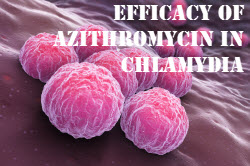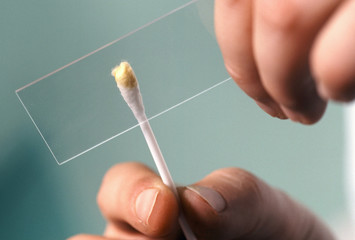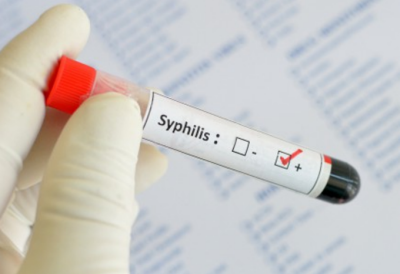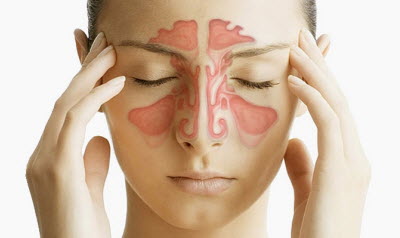Azithromycin (Zithromax) oral : Uses, Side Effects, Interactions, Pictures
Article content:
Azithromycin in chlamydia
 Modern medicine offers a few dozen drugs against chlamydia. All of them have repeatedly confirmed their effectiveness. But the most distinguished Azithromycin. It is spoken, and domestic and foreign experts. In the absence of contraindications azithromycin for chlamydia - a drug No1.
Modern medicine offers a few dozen drugs against chlamydia. All of them have repeatedly confirmed their effectiveness. But the most distinguished Azithromycin. It is spoken, and domestic and foreign experts. In the absence of contraindications azithromycin for chlamydia - a drug No1.
Efficacy of Azithromycin in Chlamydia
Chlamydia is a disease that develops as a result of the vital activity in the human body of chlamydia. To defeat these microorganisms can only be using antibacterial drugs. The most effective treatment of chlamydiosis - Azithromycin.
- The use of Azithromycin in chlamydia does not affect the production of protein involved in the process of purifying blood from harmful chemical compounds. After the course of treatment, the biochemical composition of the blood does not change.
- The components of the drug are derived from the blood of a person in 40 hours. They remain in infected cells for 60 hours.
Due to such properties, Azithromycin is widely used in chronic chlamydia.
What you need to remember in the treatment with azithromycin?
Treatment of chlamydia in men and women occurs according to the same scheme. The main efforts are directed to fight the pathogen. At the same time, measures are being taken to strengthen the body's immune system. For this purpose, immunomodulators are prescribed and the patient's lifestyle is adjusted.
The intake of antibiotics leads to the death of not only pathogenic, but also beneficial microflora. Therefore, the use of probiotics and prebiotics will be required to restore the natural balance of microorganisms. Specific drugs are selected individually for each patient.
Throughout the course of therapy, you must adhere to certain rules:
1. Refusal to have sex. In extreme cases, sex is allowed with the use of barrier contraceptives.
2. It is prohibited to drink alcoholic beverages. Simultaneous reception of antibiotics and ethanol can lead to disturbances in the work of any body system.
3. It is recommended to minimize the use of fermented milk products.
4. Drugs are taken every day at the same time.
5. Even if the obvious symptoms of the disease have disappeared and you feel better, it is strictly forbidden to stop taking the medication intentionally or to reduce the dosage.
6. If the next dose of the drug is missed, try to drink the pill as soon as possible. Then, keep the interval between doses in 24 hours.
During the treatment of chlamydia, the patient must constantly be under the supervision of a doctor. About complete cure is judged only after passing repeated laboratory tests. It is necessary to be prepared for the fact that therapy of the chronic form of the disease will be long.
Treatment is required for both regular sexual partners. Otherwise, there will be a re-infection, which will be more difficult to cope with. Immunity to such a disease is not produced.
The method of using azithromycin in chlamydia
The drug is administered according to a scheme that is developed individually for each patient.
The following therapies are most commonly used:
- If the disease is detected at the initial stage, then take 1 tablet a day. At the same time, the total amount of active substance used per course is 1 gram. Drinking tablets is recommended an hour before meals.
- With the symptoms of chlamydia, the total dose of the drug is 3 grams. On the first day of therapy 1 gram is drunk, on the second and third day on half of gramme, and during the period from the fourth till the seventh day it is enough 0,25 grammes day.
- Chronic form of the disease requires taking Azithromycin in an amount of 1 gram per week. The duration of therapy is selected by a specialist on the basis of laboratory data.
- Instruction for the use of the drug says that it can be taken without fear during pregnancy. Clinical trials on the effect of the active substance on the fetus were not conducted. Assigning such treatment, the expert proceeds from the fact that chlamydia will cause the baby more harm than the use of antibiotics. In this situation, prescribe 0.5 grams of Azithromycin per week.
If complications or a chronic type of disease are diagnosed, then the use of several types of antibacterial drugs is recommended. At the initial stage, only Azithromycin is often enough.
Once the medication is completed, the specialist conducts a second examination of the patient. If the analysis for the presence of chlamydia in the biological material is negative, we can talk about a cure. This occurs in 95% of cases.
Additional information
Why Azithromycin?
 Chlamydia treatment must be quick and focused. Successfully matched the scheme can get rid of unpleasant feelings and destroy bacteria. Complicating the work of physicians feature of the disease:
Chlamydia treatment must be quick and focused. Successfully matched the scheme can get rid of unpleasant feelings and destroy bacteria. Complicating the work of physicians feature of the disease:
- Chlamydia - intracellular parasites.
- To act on them, the drug should have properties to a deep penetration into cells.
- The life cycle of the bacteria there is a period when they are protected from the effects of antibiotics. As a result, the treatment may be futile.
- Do not exclude the development of immunity to Chlamydia used drugs.
- No obvious signs of disease or weak expression, complicating the process of selecting the drug.
All these factors are taken into account by Azithromycin.
Characteristic
The antibacterial preparation which affects protein synthesis in prokaryotes sensitive. The preparation of a wide action. Effective against many pathogenic bacteria, but absolutely no effect on fungi and viruses.
Azithromycin is different strong concentration in blood plasma, but is concentrated in the cells themselves. To measure this indicator is virtually impossible. The drug is different suction speed. It begins to be active 2-3 hours after ingestion.
How to take the drug?
 If someone thinks about taking a course of treatment on their own - immediately drive this thought. Azithromycin in chlamydia is taken according to an individual scheme. Dosage and duration of the course should be chosen by a doctor.
If someone thinks about taking a course of treatment on their own - immediately drive this thought. Azithromycin in chlamydia is taken according to an individual scheme. Dosage and duration of the course should be chosen by a doctor.
For general information, the following information is provided. The drug is taken orally once a day.
Dosage - 1 g. This scheme of treatment in some cases ends. The big plus is that at one time you can get rid of the most complicated disease.
At the initial stage of the disease - 1 time per day for an hour before meals, or 2 hours after it.
With slightly expressed symptoms - 3 g of the drug according to the following scheme:
1. 1 day - 1 g;
2. 2-3 - 0.5 g;
3. 4-7 - 0.25 g.
The course is 1 week.
With complications and acute form - 1 g of the drug once a week for 21 days. Since the effect of the drug is directed to the effect within the cells and does not affect the activity of other drugs, it is often taken together with other antibiotics. If chlamydia is detected at the initial stage - only azithromycin is sufficient.
With mild symptoms or acute stage of the disease, the treatment is combined. The control study is conducted on the 10th day after the end of treatment. In 95% of cases, azithromycin defeats the disease.
Producers say that the drug is not dangerous for a pregnant woman and fetus. However, it is necessary to warn the attending physician about his situation or his planning. Data on whether the drug affects the fetus is not available.
As well as what part passes into the mother's milk. Assign to pregnant women 0.5 g of azithromycin for 1 week. For children, the drug is released as a suspension. The powder dissolves in the required amount of water in 2 stages. Shakes and drinks at the same time. If the prepared antibiotic is not used within 12 hours - discarded. If there are problems with the gastrointestinal tract, the drug is taken with food.
Azithromycin in cystitis
 Very often the doctors prescribe Azithromycin in acute cystitis. This antibiotic is effective against many bacteria and diseases. It destroys the substances in which bacteria develop, depriving them of their nutrient medium and protection.
Very often the doctors prescribe Azithromycin in acute cystitis. This antibiotic is effective against many bacteria and diseases. It destroys the substances in which bacteria develop, depriving them of their nutrient medium and protection.
The drug is less aggressive towards the human body compared to similar antibiotics, since its action is directed only at the protein from which the bacteria are composed. Azithromycin rapidly neutralizes the pathogenic flora and reduces inflammation.
That is, when patients treated with azithromycin, they "shoots two birds with one shot" - gets rid of bacteria and the harm they caused the bladder.
Possessing a cumulative effect, the drug continues to fight the cause of cystitis even after the end of treatment. In this case, negative reactions from the gastrointestinal tract, as happens during the intake of other antibiotics, are very rare.
Dosage and method of taking azithromycin in cystitis
- For the treatment of cystitis in adults, basically, one package is enough. The daily dose of the drug - one tablet of 500 mg or two of 250. That is, the treatment lasts three days.
- Children aged 12 years are prescribed half of the adult dose, that is, 250 mg of the drug per day. The drug is taken on an empty stomach, the capsule is swallowed whole, squeezed with enough liquid.
- In the case of severely neglected cystitis, a slight increase in the dose is possible. It must be remembered that any drug should be prescribed by the doctor, based on the clinical picture and symptoms.
Note! The drug is contraindicated in patients during pregnancy and lactation, people with hepatic or renal insufficiency, as well as those with allergic reactions to the components that make up Azithromycin. The medicine is not prescribed for children under 12 years of age and for people suffering from arrhythmia.
Fortunately, all the side effects from azithromycin are very rare, the tablets are tolerated well by all age groups of patients over 12 years old. In combination with other antibacterial agents, taking Azithromycin may lead to an overdose, therefore, when a doctor prescribes a drug, you should notify him if any other medicines are being taken.
Tips for using Azithromycin in cystitis
1. It is not allowed to take an antibiotic together with alcoholic beverages. This will lead to ineffective treatment and can damage your health.
2. In the treatment of cystitis, it is better to follow a diet, which you can ask your doctor.
3. It is undesirable to use sour-milk products while taking Azithromycin, as this can lead to prolonged diarrhea.
4. In order to drink medicine, you should use only pure water. Do not drink the drug with juices or tea.
5. If you have prescribed Azithromycin yourself, without consulting a doctor, it is better not to risk and try to treat cystitis without taking the drug.
Conclusion
Anyone can get an inflammation of the bladder. Especially it concerns young girls and girls - adolescents, who often do not dress appropriately for the weather or sit on cold surfaces. If you have any of the symptoms of cystitis, you need to be examined and tested. Only a doctor can professionally evaluate the situation, prescribe an effective and safe treatment.
Features of treatment with antibacterial drugs
Antibiotics for the effective treatment of cystitis are prescribed only after a complete examination of the urologist, and for women - and the gynecologist. Sometimes inflammation of the bladder appears by itself - in most cases it is caused by E. coli. But sometimes it is combined with other diseases.
So, cystitis often occurs against a background of sexual infections - gonorrhea, chlamydia, mycoplasma, trichomoniasis. His symptoms are familiar to diabetics, people with chronic inflammation of the kidneys and urolithiasis. The cause of the violation of the bladder can be complicated sinusitis, tonsillitis, tuberculosis. In this case, treatment should be carried out in a complex way, one antibiotic for the treatment of cystitis will not be enough.
Antibacterial drugs for complex treatment
For the complex treatment of inflammation of the urinary bladder, five types of antibiotics are used against cystitis. Each group of drugs affects one type of disease-causing bacteria. They can be used individually or in various combinations:
1. Antimicrobial agents: Nitrofurantoin (Furazolidone, Furadonin, Furamag, Norfloxacin, Ciprofloxacin, Nolycin, Norbaktin, Palin, Abaktal, Cyprolet, Nitroxoline (5-NOK) and others.
2. Macrolide antibiotics that affect gonococci, staphylo- and streptococcus (Erythromycin, Azithromycin)
3. Sulfanilamide group: Biseptol 480, Sulfisoxazole, Sulfamethizole and Sulfamethoxazole.
4. Tetracycline group: Tetracycline, Doxycycline.
5. Penicillin group: Amoxicillin, Ampicillin, Cefaclor, Cephalexin.
So, ascending infections from the bladder are treated with antibiotics 5-NOC or Nitroxoline and sulfonamides. They help prevent the spread of the infection to the kidneys. If the doctor diagnoses a cystitis with a sexual infection, the antibiotic Amoxicillin may be administered along with Trichopolum or another necessary preparation.
How to take antibiotics for cystitis?
During the treatment of cystitis with antibiotics, the duration of the course and the exact dosage should be observed so that the bacteria are not "accustomed" to the drug. Treatment in women should be monitored not only by the urologist, but also by the gynecologist. Special attention is required:
- children and elderly people;
- patients with chronic recurrent cystitis;
- pregnant women;
- diabetics.
If the treatment does not help, then in order to change the antibacterial drug, you need to repeat the examination and tests. Sometimes the symptoms of cystitis in women do not disappear due to the fact that the result of antibiotic treatment is thrush. In this case, the use of antimicrobial drugs can not continue. But if the cause of inflammation is really candidiasis, then they will not be needed. Such cystitis usually passes after one tablet of Fluconazole.
Azithromycin for syphilis treatment
 Over the past decades in all countries of the world, one of the most common infections is syphilis. According to the latest data, the total number of patients in the US in the past 2 years has decreased by almost 48%, but this number continues to be beyond the permissible line, requiring special attention of physicians.
Over the past decades in all countries of the world, one of the most common infections is syphilis. According to the latest data, the total number of patients in the US in the past 2 years has decreased by almost 48%, but this number continues to be beyond the permissible line, requiring special attention of physicians.
The most commonly used therapeutic against syphilis worldwide is benzylpenicillin in the form of potassium or sodium salt, and also as a prolonged-release drug - benzathine benzylpenicillin. The disadvantage of this very effective remedy is a high risk of anaphylactic shock in hypersensitive patients, which leads to the need to search for other antibiotics.
One of such drugs with syphilis is Azithromycin. In the course of studies of the effect of this drug, it can be concluded that the treatment of syphilis with azithromycin is in many cases almost as effective an agent as penicillin, and in the early forms of the disease, and at all, not inferior to benzylpenicillin.
Antibiotics for syphilis effectively eliminate its symptoms during therapy, as they destroy bacteria that provoke the development of this terrible disease. The course of treatment and dosage are determined based on the stage at which infection was detected. In this section of the article we will discuss in detail how to get rid of syphilis with antibiotics.
Treatment
Doctors-venereologists have in their arsenal a wide range of preparations of antibacterial action. However, syphilis can only be effectively treated with the help of several groups of antibiotics.
It should be noted that the most effective drug of the macrolide class is Azithromycin. Features of the use of the tools of this group are as follows:
1. Antibiotics have a bacteriostatic effect, that is, they do not kill bacteria, but prevent their reproduction.
2. When diagnosing renal and hepatic insufficiency in a patient, azithromycin should be taken with caution and regularly monitor the enzyme and creatinine.
The therapeutic regimen for the treatment of syphilis with Azithromycin is prescribed in two versions:
1. The initial stage is 500 mg of azithromycin per day (the course lasts 10 days);
2. The second stage - sumamed is prescribed exactly with the previous scheme, erythromycin is prescribed in the same dosage (500 mg to 4 doses per day), the duration of the course of treatment is increased to 30 days.
When syphilis is considered cured?
Venereologists noted some signs, the grounds on which after antibacterial therapy the degree of cure for syphilis is estimated.
1. After completing the full course of treatment the patient should undergo non-treponemal tests (tests). This includes the reaction of micro-precipitation with cardiolipin antigenomna syphilis and a blood test for the vasserman reaction.
2. All listed studies should have a negative overall score or titres of nonspecific antibodies should decrease 4 and more times, in comparison with the primary analysis.
3. Next, the patient is assigned to give a three-fold analysis of serum in the blood plasma, with an interval between medical studies in 90 days.
4. After treatment with antibiotics, the patient should not have any signs of the disease.
From this material, we learned what antibiotics are treated for syphilis. However, under no circumstances should you take the drug yourself. The disease is difficult to diagnose and requires constant control over the stages of recovery. Remember, nobody has canceled the medical secret and you always have the opportunity to get qualified medical care in any specialized institution of the country.
More info about Azithromycin read at pharmacy
How to take azithromycin to treat genyantritis (sinusitis)
 Runny nose can be accompanied by a simple cold, but also inflammation in the maxillary sinuses. The delay in detecting the disease and later treatment leads to the formation of pus in the nasal passages. And this is very dangerous. Here you can read what signs can be evidence of genyantritis (sinusitis).
Therefore, to quickly cure such a disease at its very beginning resort to antibiotics.
Runny nose can be accompanied by a simple cold, but also inflammation in the maxillary sinuses. The delay in detecting the disease and later treatment leads to the formation of pus in the nasal passages. And this is very dangerous. Here you can read what signs can be evidence of genyantritis (sinusitis).
Therefore, to quickly cure such a disease at its very beginning resort to antibiotics.
Of course, there is nothing good in them, but this forced measure saves the body from harmful consequences. Only it is necessary to choose an effective and most sparing medicine, capable in the shortest possible time to get rid of an unpleasant genyantritis (sinusitis) (or as it is also called maxillitis). In the fight against such a disease, the drug "Azithromycin" proved to be very successful.
This drug is an antibacterial agent that has a wide range of effects on the body. It is able to accumulate in large quantities in the focus of inflammation and block the work of pathogenic bacteria. The drug prevents their reproduction, and they eventually die. Azithromycin penetrates deep into the respiratory tract, and is also able to rapidly enter the blood. Due to these features, its effect becomes noticeable after several hours after taking the medication.
It effectively treats genyantritis (sinusitis), eliminating the causative agents of this infection.
Azithromycin differs prolonged half-life. It is able to remain permanently in the body. Therefore, it can only be receiving once daily. And their treatment is much smaller than with other antibiotics. The great thing that the drug can be used in parallel with folk remedies to treat sinusitis.
Azithromycin is able to suppress Gram-positive bacteria, which serve as the main cause of sinusitis. It is used to eliminate inflammation in the sinuses of the nose. Many patients talk about it as a mixture of three tablets.
This is because a noticeable elimination of the disease occurs after the third dose. It always raises the question of how many days to take azithromycin. All information is given in the instructions. This drug produces several pharmacological firms and almost every one of their products can be drunk at any time, regardless of the meal. In addition to the drug from the company Zmax. If the purchased product is produced by this brand, then it should be drunk on an empty stomach one hour before a meal or two hours after. Food can prevent completely assimilate the drug.
How many days to drink Azithromycin for sinusitis?
The duration of treatment is an average of 7 days, with acute forms can reach two weeks. In the case of chronic sinusitis can last longer. But if after 14 days of using the drug there are no changes for the better, then it should be replaced, after consulting with the doctor. Treatment of sinusitis should occur under the supervision of a doctor. Sometimes people try to cure an ailment at home, doing inhalations with genyantritis. This is dangerous if you perform inhalation at some stages of the disease.
Azithromycin is an indispensable tool for those who want as soon as possible to get rid of sinusitis. It is able to eliminate their doses pathogens and permanently prevent them through the main property - long linger in the body. With prolonged use, it also reflected a bactericidal effect. This drug does not cause addiction, even with regular use for a long time.
Azithromycin for gonorrhea
 Gonorrhea treatment to this day remains an urgent problem. One of the science-based treatment regimens for gonorrhea is a scheme using azithromycin. This broad-spectrum antibiotic synthesized based on erythromycin. In comparison, azithromycin for gonorrhea has many advantages. Unlike alternative macrolide antibiotics, it, as a representative of azalide subclass, rapidly absorbed, is acid and is significantly faster displays the body of gonococcus.
Gonorrhea treatment to this day remains an urgent problem. One of the science-based treatment regimens for gonorrhea is a scheme using azithromycin. This broad-spectrum antibiotic synthesized based on erythromycin. In comparison, azithromycin for gonorrhea has many advantages. Unlike alternative macrolide antibiotics, it, as a representative of azalide subclass, rapidly absorbed, is acid and is significantly faster displays the body of gonococcus.
According to some data already in a day after taking the drug gonococcus is not detected. It noted the persistence of azithromycin at therapeutic concentrations directly in the inflammatory foci within a week after the last. Azithromycin with gonorrhea can influence the most resistant strains, because gonococcus rarely develop tolerance to it.
Successful treatment of gonorrhea depends on a number of factors and selected antibacterial agents. How effective is Azithromycin in gonorrhea?
One of the most effective and popular means for treating gonorrhea is the broad-spectrum antibacterial drug Azithromycin. In comparison with other antibiotics, it has a number of advantages and has the greatest number of positive reviews about successful cure.
Advantages:
- Azithromycin is very quickly absorbed into the blood;
- Azithromycin does not decompose in acid media;
- Azithromycin ensures the rapid removal of gonococci from the body of the patient.
This antibiotic acts on any strains of gonococci, despite their constant mutation. These factors explain its effectiveness in the treatment of this disease. Because of many side effects, this medication is not used to treat gonorrhea in pregnant women and children.
How to take Azithromycin for gonorrhea
Scheme of treatment.
Azithromycin is an antibacterial preparation with a wide spectrum of action. In the tablet form, its dosage is 500 mg.
Treating gonorrhea with this antibiotic is simple and convenient for the patient. Relief of his condition comes already during the first day. In the case of an acute course of the disease, it is necessary to take a single dose of 1.5-2 g of this drug or divide it into two doses of 1 g.
Tablets Azithromycin are taken one hour before meals. Sometimes the doctor may be prescribed intramuscular injection of the drug.
The drug can be combined with other antibiotics. As statistics show, a single dose of 2 g of Azithromycin in acute gonorrhea relieves this disease in about 99% of cases.
However, do not self-medicate. If you have any symptoms of infection with gonorrhea, do not try to get rid of them yourself. The treatment regimen should only be prescribed by a doctor after the necessary tests and tests have been performed. Antibacterial drugs have a number of side effects and can lead to deterioration of the patient, especially if he has chronic diseases.
In order to avoid re-infection in the detection of gonococci in sexual partners, they must also undergo a course of treatment.
To order Azithromycin you may visit official online store.
